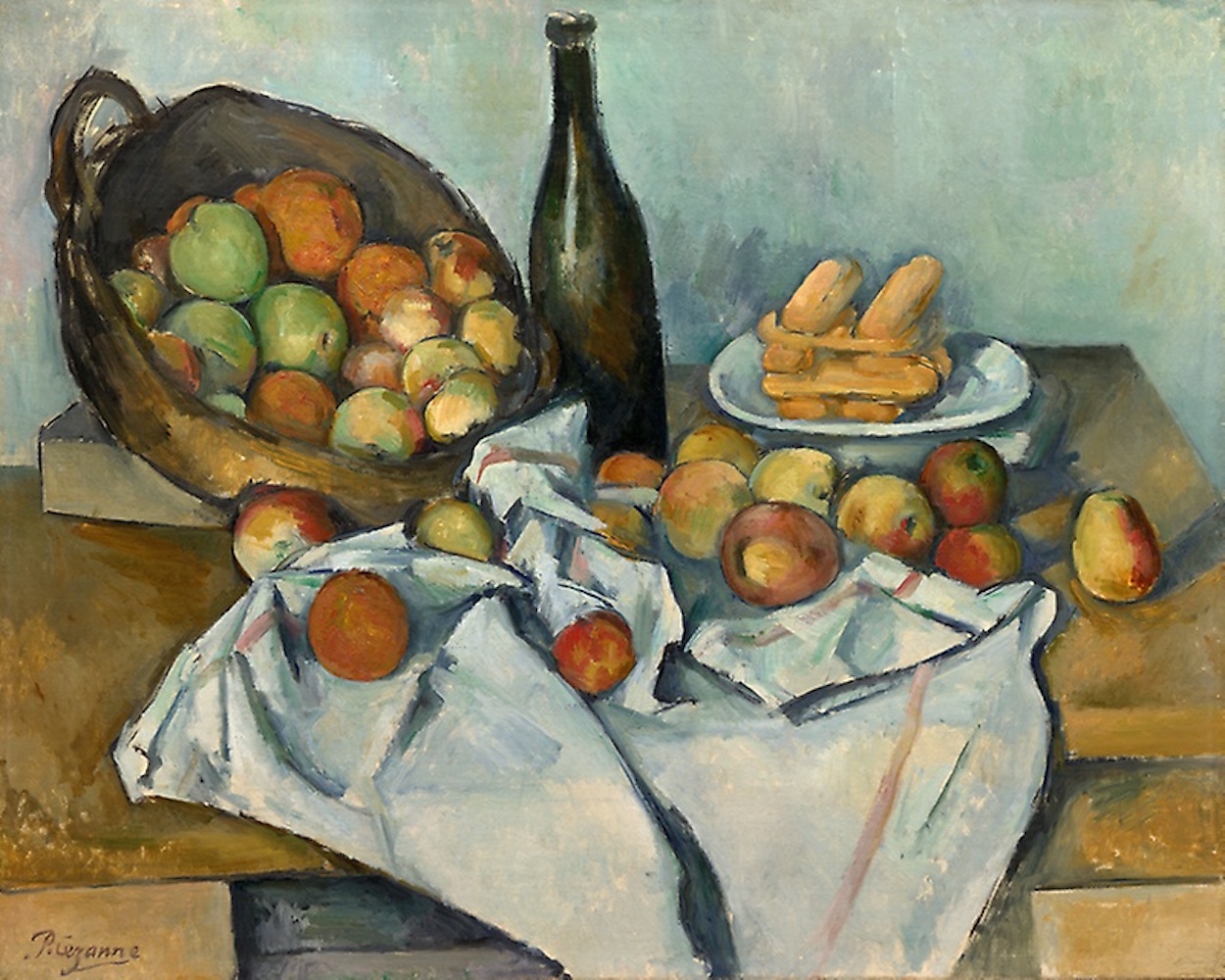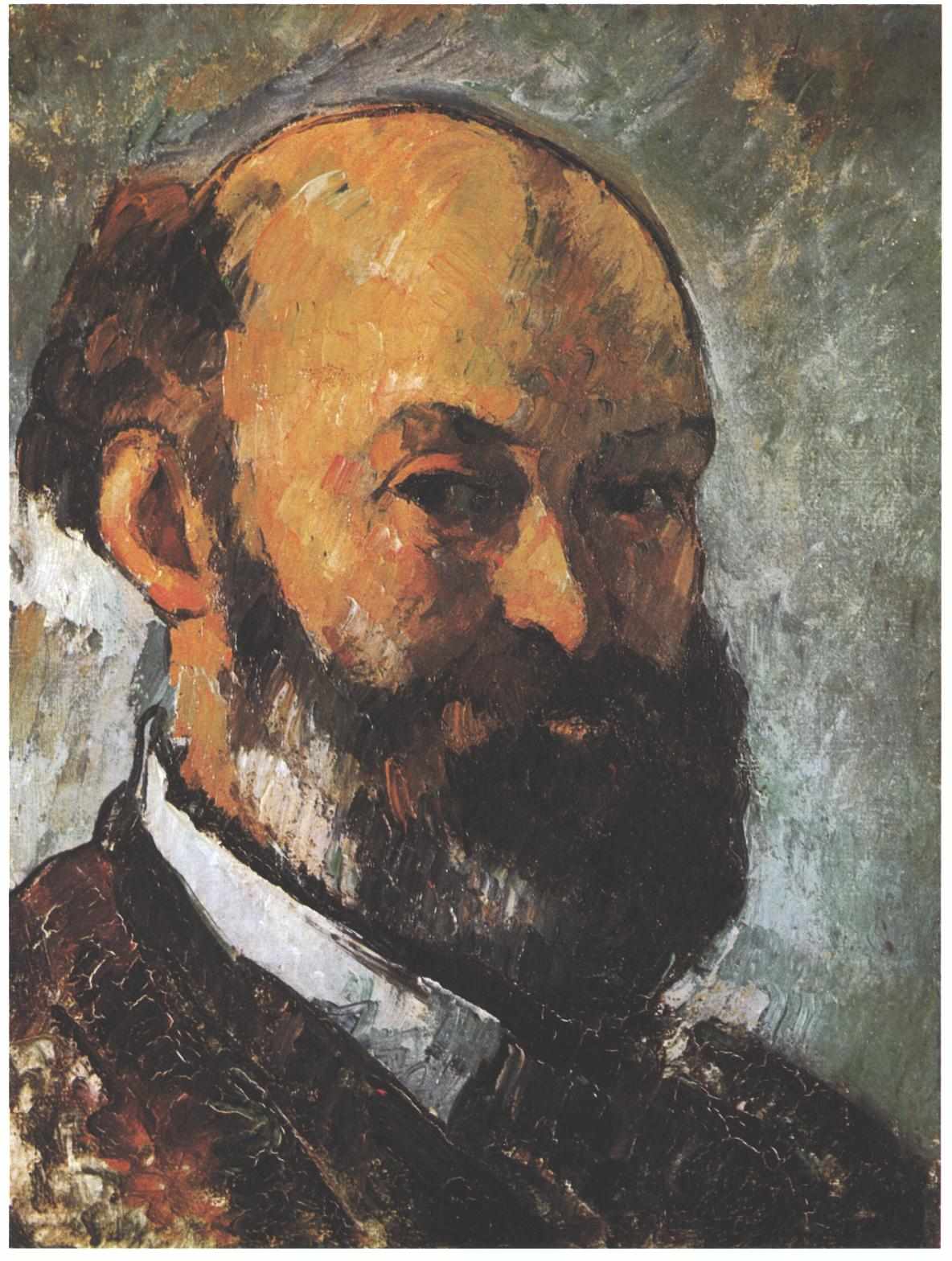Art, Paul Cézanne once claimed, is "a harmony running parallel to nature," not an imitation of nature. In his quest for underlying structure and composition, he recognized that the artist is not bound to represent real objects in real space.
The Basket of Apples is often noted for its disjointed perspective. It has been described as a balanced composition due to its unbalanced parts; the tilted bottle, the incline of the basket, and the foreshortened lines of the cookies mesh with the lines of the tablecloth. Additionally, the right side of the tabletop is not in the same plane as the left side, as if the image simultaneously reflects two viewpoints.
Paintings such as this helped form a bridge between Impressionism and Cubism.
This painting is one of Cézanne’s rare signed works; it was part of an important exhibition urged on the artist by the Parisian art dealer Ambroise Vollard in 1895. Because Cézanne had spent the majority of his career painting in isolation in his native Provence, this was the first opportunity in nearly twenty years for the public to see the work of the artist who is now hailed as the father of modern painting.
To learn more about the artist's still lifes, read the article All We Know About Cezanne’s Fruits.


 Paul Cézanne
Paul Cézanne